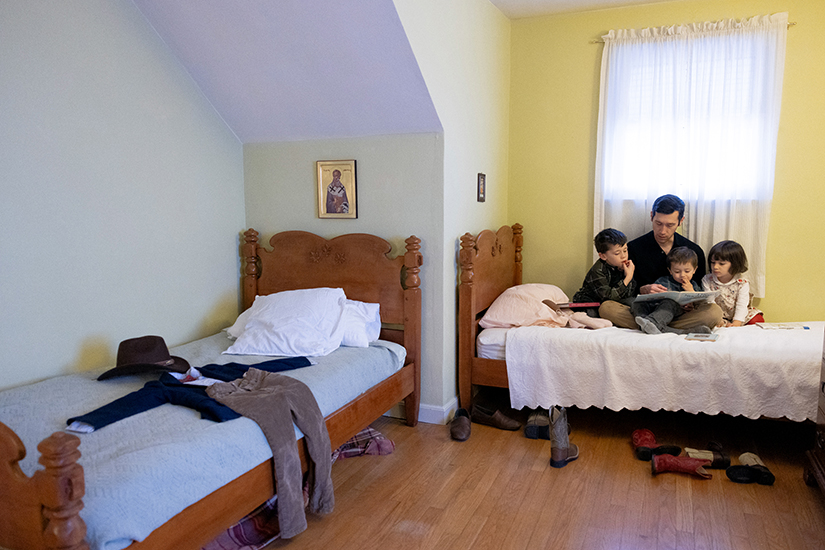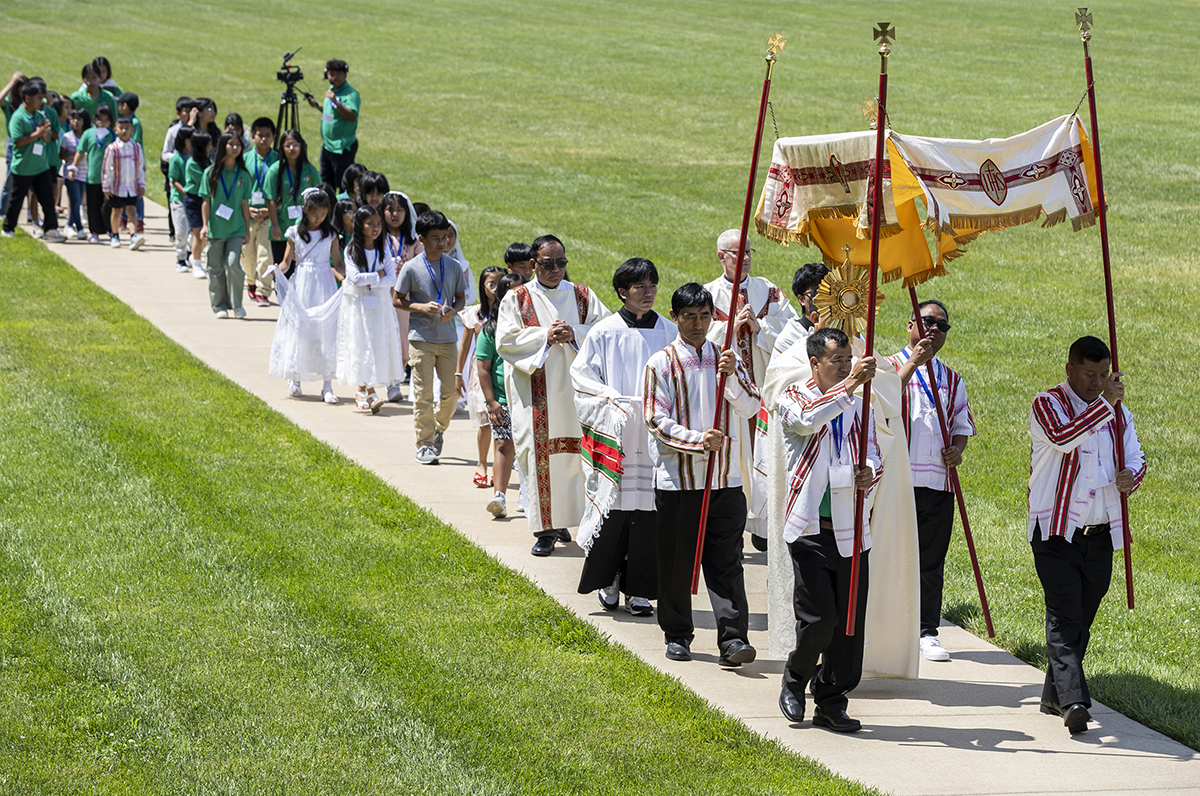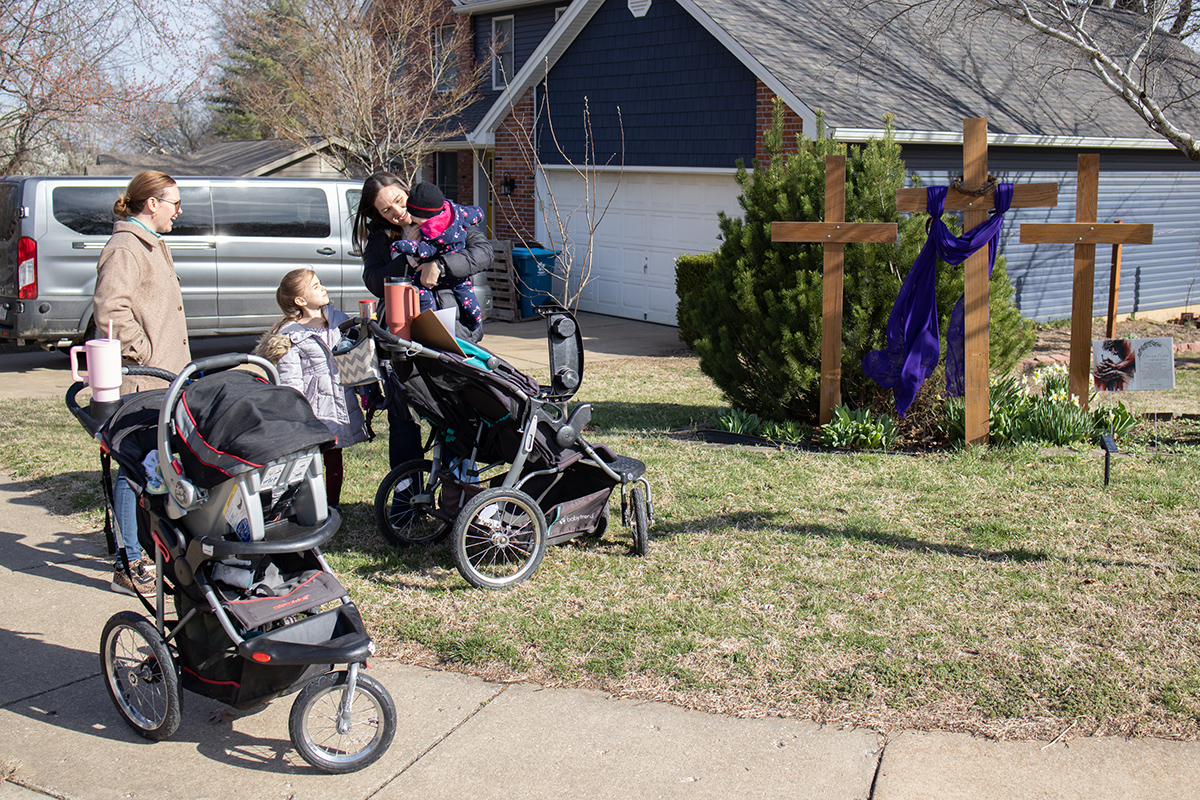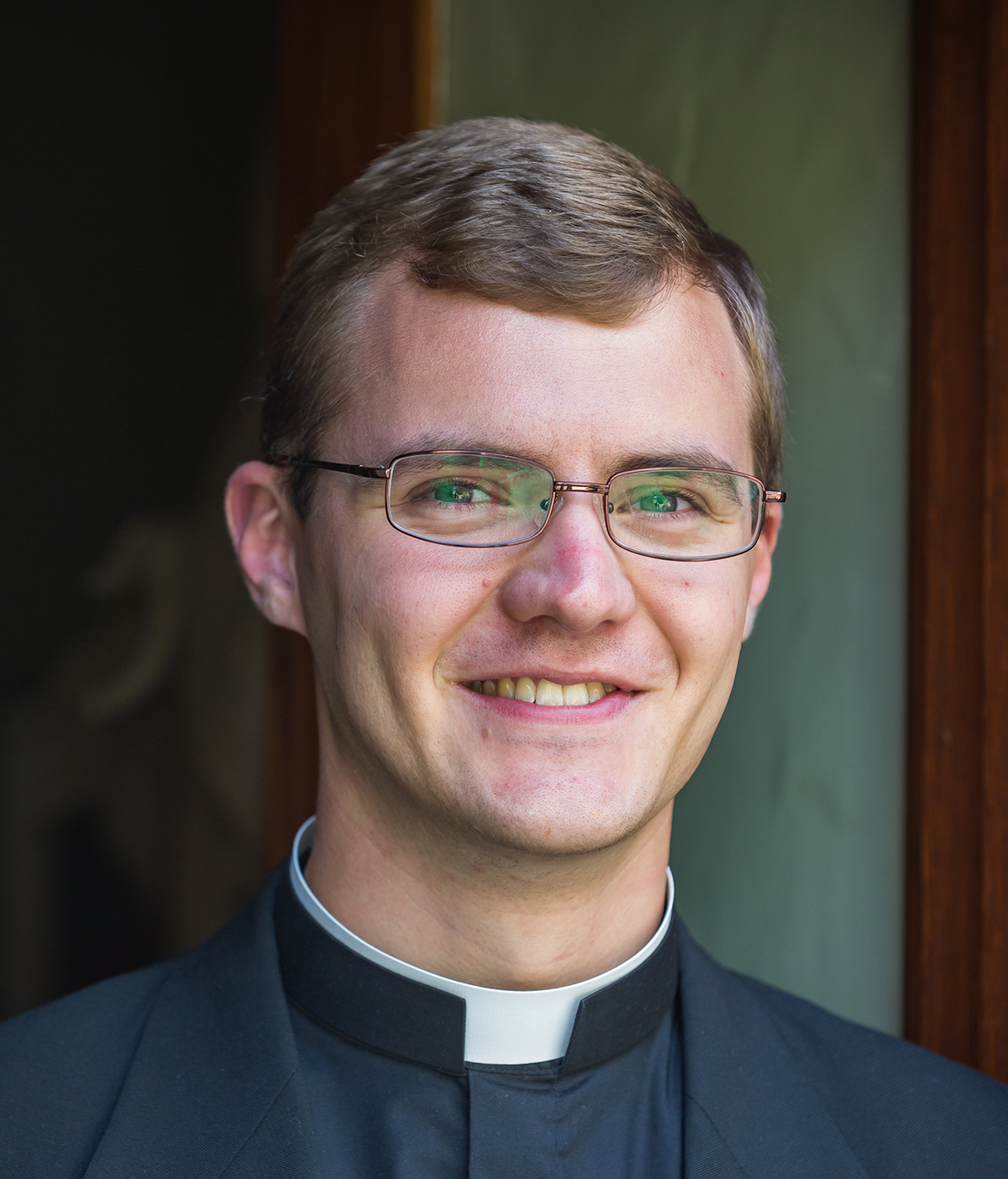Sacred art for the domestic Church: Beautiful depictions of Jesus, Mary, saints in our home remind us God at work in our ordinary days

Sacred art in the home offers reminders of God at work in our ordinary days, St. Louis artist says

Gwyneth Thompson-Briggs’ oil paintings of St. Benedict and St. Scholastica are some of her favorite works. The St. Louis artist’s 25.5-by-20-inch originals hang in the side chapel of a Benedictine monastery in Norcia, Italy, near the sibling saints’ birthplace.
Thompson-Briggs, who describes herself as a sacred artist in the Western tradition who uses techniques from the Renaissance and Baroque eras, recalls finding siblings to serve as models for the paintings and borrowing real Benedictine habits from monasteries. She started the work while pregnant with her son Bruno and put on the finishing touches with him nestled close in a baby carrier, working in her natural-light-filled studio at St. Francis de Sales.
“There’s probably thousands and thousands of depictions of Benedict and Scholastica,” she said. “But each one of them can harbor a different aspect for spiritual fruit and reflection. So it might be that my paintings resonate with one

person who has maybe seen others, but there’s something else there that they like — that makes me really happy.”
Now, prints of those paintings are being shared in Ignatius Press’ new collection, “The Catholic Home Gallery,” a book containing 18 works of art by contemporary sacred artists. The book is designed with perforated pages, allowing the art to be removed and hung in the home.
“The work these artists have crafted is not only meant to hang in churches. It is meant to hang in homes, where those works of art can come alive, teaching, forming, loving, and evangelizing our families,” Emily Stimpson-Chapman wrote in the book’s foreword.
Incarnational faith
Sacred art is an important reminder for us that our faith is not just an intellectual set of beliefs, but the worship of the living, breathing God, said Father Michael Rennier, pastor of Epiphany Parish in south St. Louis. “Our faith is incarnational, meaning it’s very fitting that it would be embodied,” he said.

Most people are used to seeing sacred art inside a church: the crucifix over the altar, a statue of the Blessed Mother, and perhaps additional statues of saints, paintings and mosaics on the walls or ceiling, or stained glass windows lining the nave.
“When we surround ourselves with physical beauty, beautiful things like sacred art, that helps us to pray better, and it helps us to guide our intellects toward a contemplative understanding of who God is. And it brings our faith to life,” Father Rennier said. “What we see, what we’re hearing, what we smell, all of it brings us as a family into the worship of God in a very real and tangible way.”
These tangible reminders of our faith are similarly helpful in the home, which we strive to make a domestic Church, Father Rennier said.

“Our faith is not just something that’s practiced for an hour on Sunday mornings. We want beautiful, sacred spaces in our churches because it draws people to God, it’s evangelistic and it makes beauty available to everyone,” he said. “And then on a smaller scale, we do that in our homes, because of course, that’s where the faith is really nurtured.”
When Thompson-Briggs and her husband, Andrew, bought their home in south St. Louis last year, they decided to make sacred art a priority around the house.
“Until this year, we were always telling people, ‘buy sacred art!’ because I’m a sacred artist, but we weren’t really following our own advice,” she said.
They purchased an alabaster bust of the Blessed Mother and an ivory crucifix, originally from Belgium, for the front living room.
“I have just been amazed at how much it transforms the space,” she said. “And placing (sacred art) at the center of not only your living room, but also your bedroom and other rooms, it just orders your day and inspires you every time you pass by it.”
The alabaster Madonna sits in the center of the living room fireplace mantel, the focal point of the front room, and the family decorates around it according to the liturgical season. During Lent, they strip the mantel bare, except for perhaps some plain beeswax candlesticks; during the Christmas and Easter seasons, they add fresh flowers, greenery, candles and more surrounding the Blessed Mother.

“You can just get caught up in the mundane, especially if you’re home with children — there’s just this frantic pace of diapers and cleaning and chaos,” said Thompson-Briggs, whose children are ages 6, 4, 2 and 2 months. “You can’t just expect yourself to say, ‘Oh, I’ll keep in mind the loftiness of my vocation, and the day of the liturgical year.’ Instead, you need to say, ‘you know, I lapse into being caught up with the everyday, so I need to plant all of these reminders around myself so I can’t forget.’”
Other works of art depicting Jesus, Mary and the saints are spread throughout the house. An image of the Sacred Heart that was in Thompson-Briggs’ childhood home is now displayed in her own kitchen; portraits of her children’s patron saints hang above their beds.

There’s even a small Madonna and Child right above the upstairs bathroom sink. No part of everyday life is too small to invite Jesus into, Thompson-Briggs said. While brushing teeth with small children can easily devolve into chaos, the image of Mary and Jesus provides a reminder of “what the goal is here. Yes, it’s getting teeth brushed, but it’s also trying to train them in virtue,” she said. “We all need to get to heaven someday. It’s another moment where as a mother, I just try to take the long view.”
In addition to its importance for her own family life, sacred art can be an opportunity to evangelize when others visit her home, Thompson-Briggs said. Having images of Jesus, the Blessed Mother and saints prominently displayed can be “a wonderful conversation starter,” she said. “If something is truly beautiful, I think it can transcend time and culture and provide a starting point to really connect and say, ‘Wow, this is compelling — what makes it compelling?’”
Sometimes starting a home sacred art collection might seem daunting, but it doesn’t require going out and spending thousands of dollars, Thompson-Briggs said. You can start with a crucifix, image or statue you may already have or be able to find secondhand, or even a piece of art you create yourself, she said. The important thing is that it helps glorify the Lord in your home.
“(Another) thing that could hold people back is maybe being self-conscious of being very open about their faith,” Thompson-Briggs said. “But if you’re not comfortable having your faith enthroned in your own living room, where are you comfortable with it?”
>> Creating a focal point in the home with sacred art
Gwyneth Thompson-Briggs’ tips

1. Select a location that is the focal point of the room. For example, in a living room, it might be a fireplace or mantel, or a wall above the main seating area. Then, choose the “best quality art that you can,” Thompson-Briggs said. “That might be the most beautiful print you can find. Or it could be a drawing that you’ve made yourself, or a statue that you already have.”

2. Watch out for scale. “You don’t want to have a giant Mary and then a tiny St. Joseph,” she explained. If you’re grouping multiple pieces, they should make sense together.

3. Pay attention to symmetry. Try to have the dominant element in the center. If you’re going to have candles or flowers, have them centered right below it or symmetric on both sides.

4. Imbue the space with additional beauty. “You could use real flowers, real candles, and doilies or linens on an altar,” she suggested.
Learn more about Gwyneth Thompson-Briggs: gwyneththompsonbriggs.com
Purchase “The Catholic Home Gallery” from Ignatius Press: Scan QR code or visit stlreview.com/3JdTao3
Thompson-Briggs Gwyneth Thompson-Briggs’ oil paintings of St. Benedict and St. Scholastica are some of her favorite works. The St. Louis artist’s 25.5-by-20-inch originals hang in the side chapel of a … Sacred art for the domestic Church: Beautiful depictions of Jesus, Mary, saints in our home remind us God at work in our ordinary days
Subscribe to Read All St. Louis Review Stories
All readers receive 5 stories to read free per month. After that, readers will need to be logged in.
If you are currently receive the St. Louis Review at your home or office, please send your name and address (and subscriber id if you know it) to subscriptions@stlouisreview.com to get your login information.
If you are not currently a subscriber to the St. Louis Review, please contact subscriptions@stlouisreview.com for information on how to subscribe.







